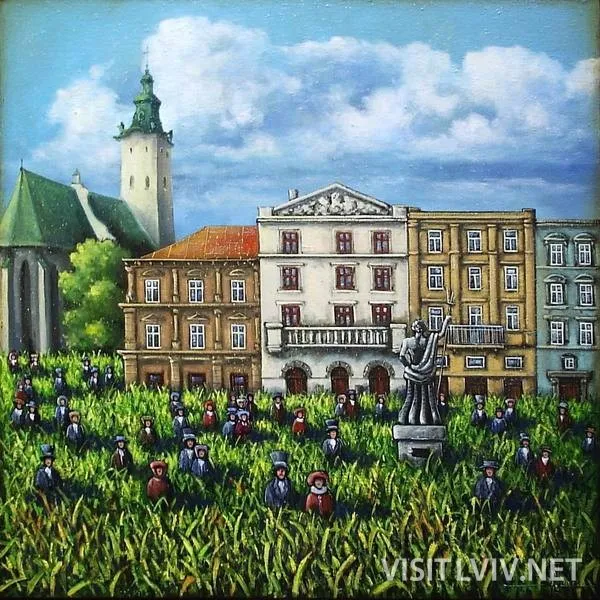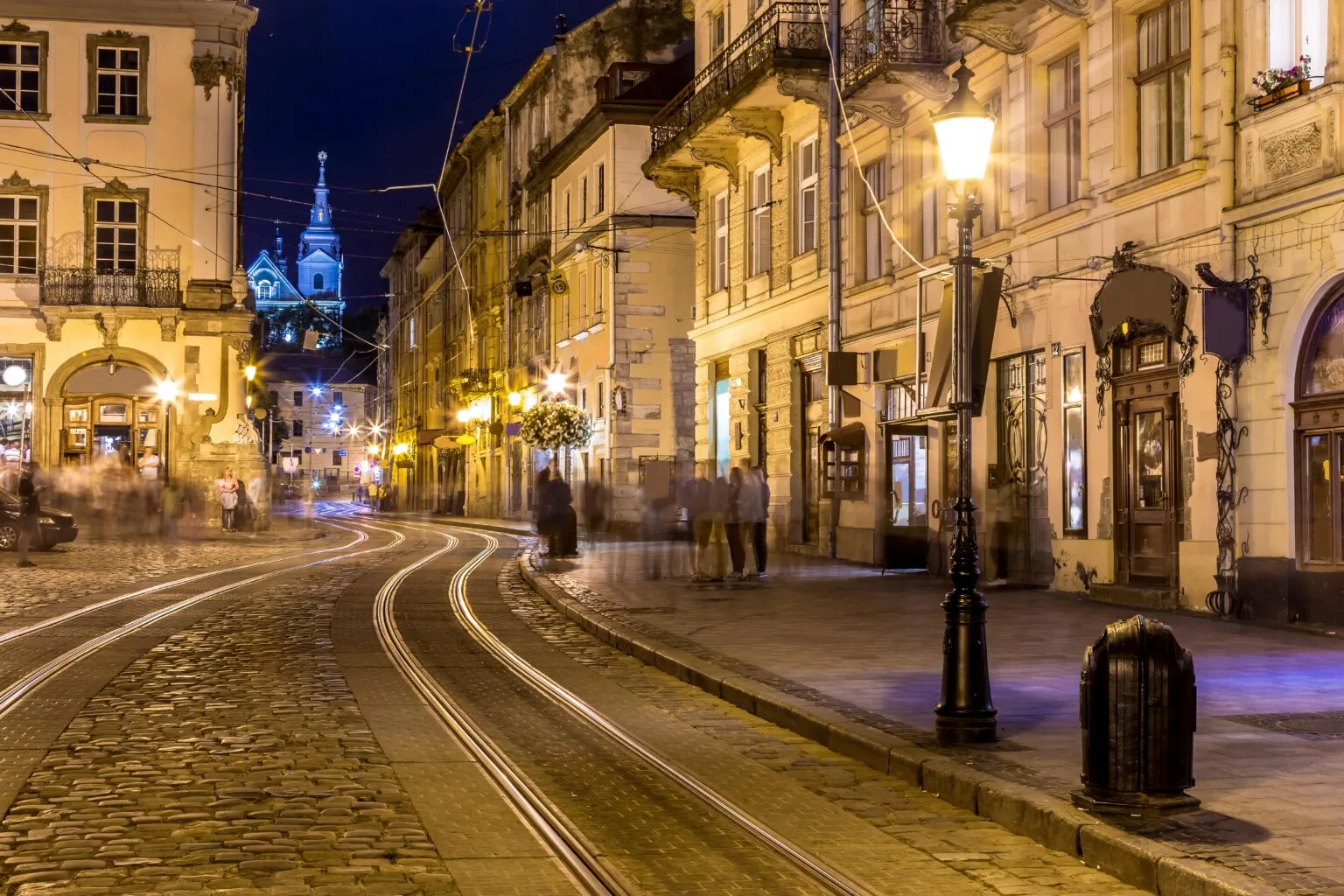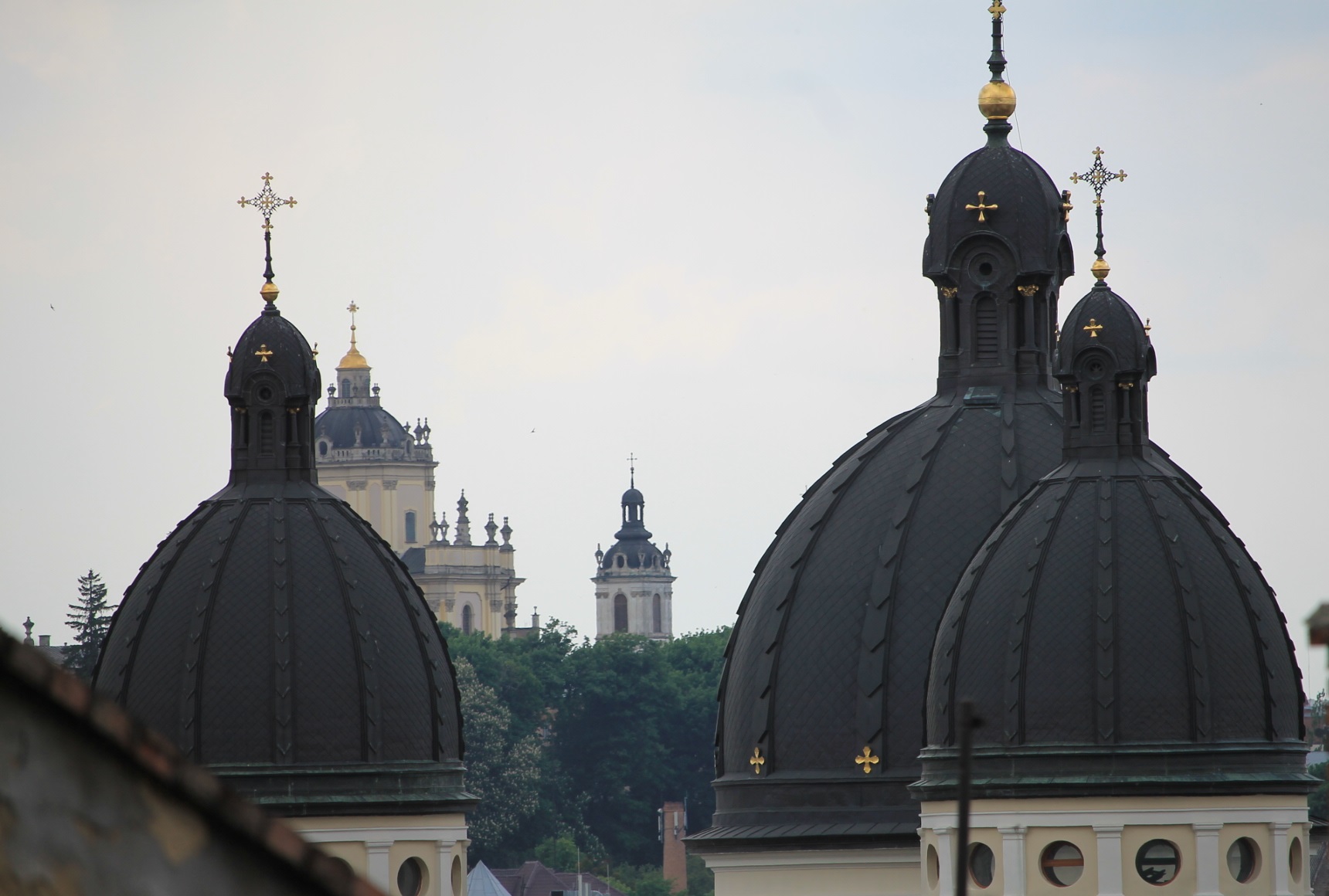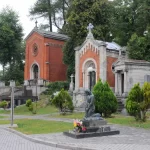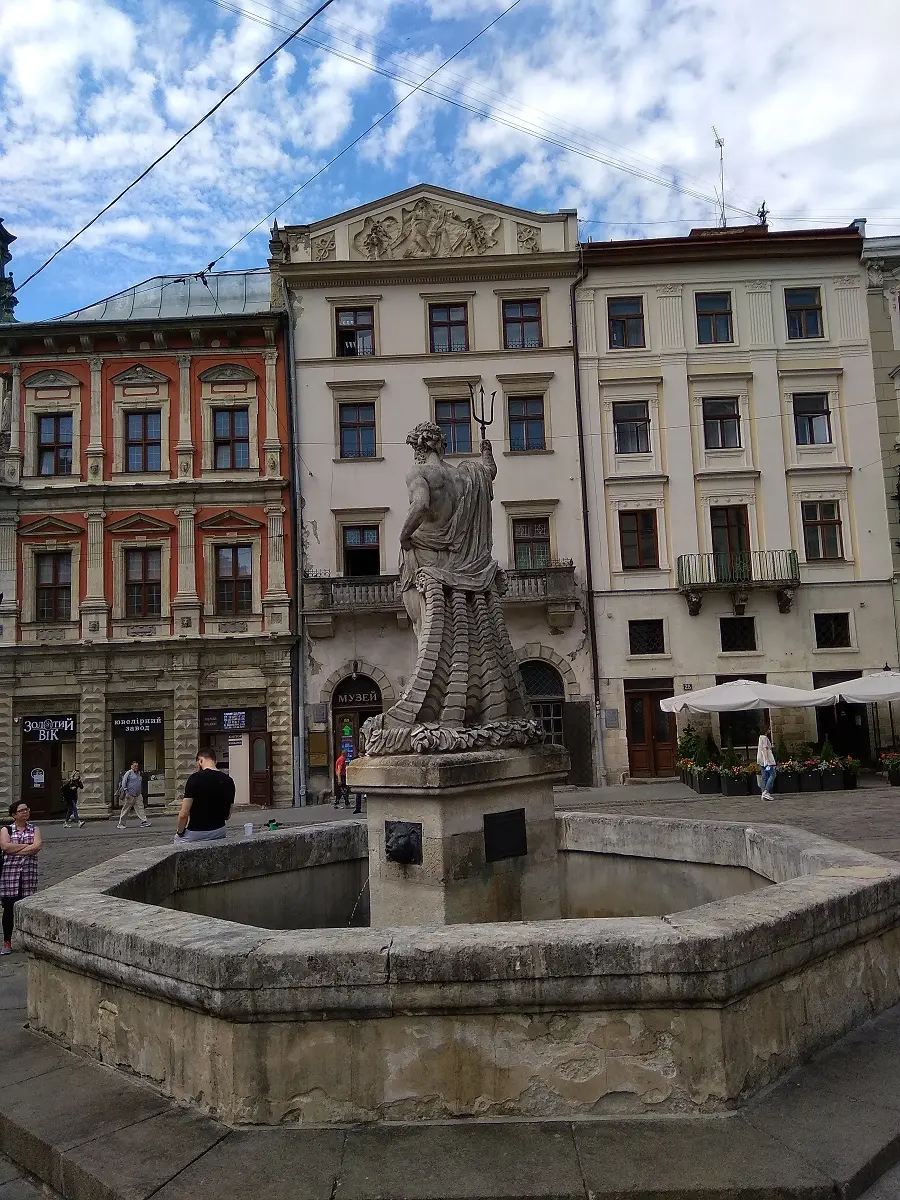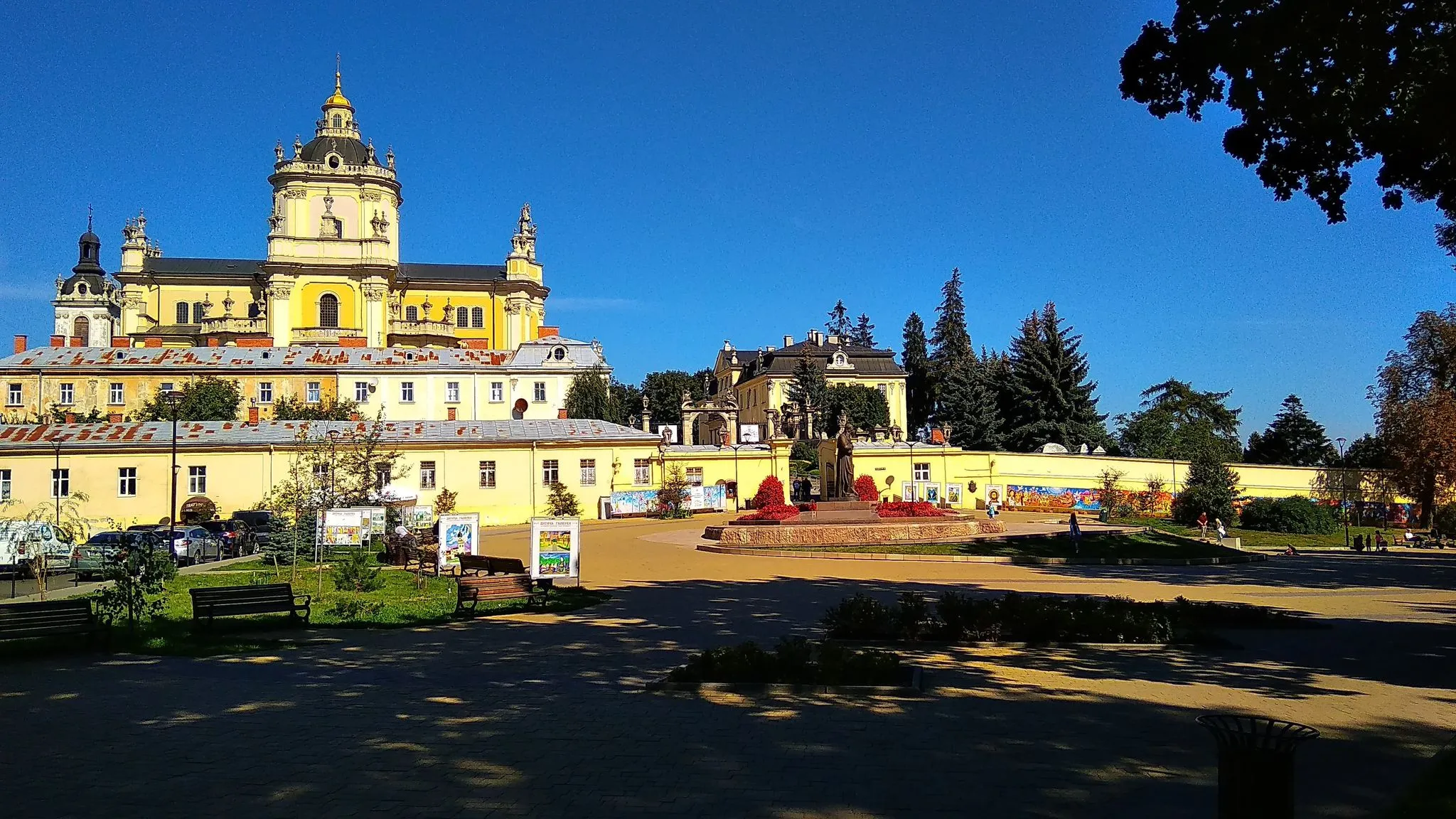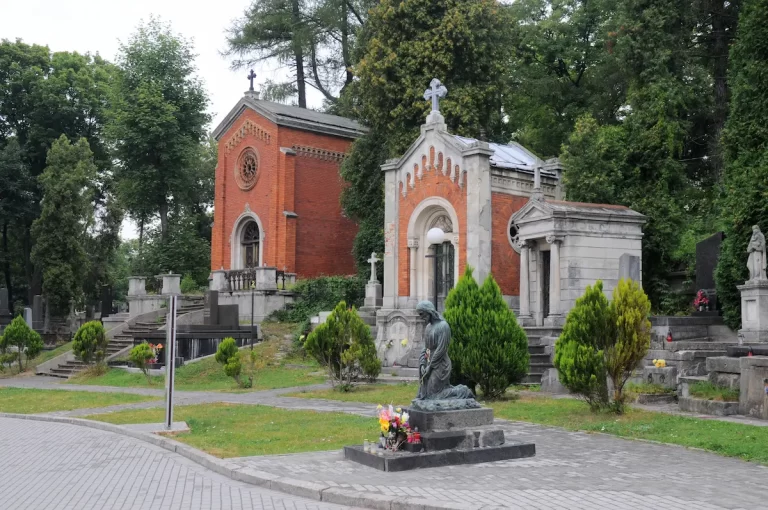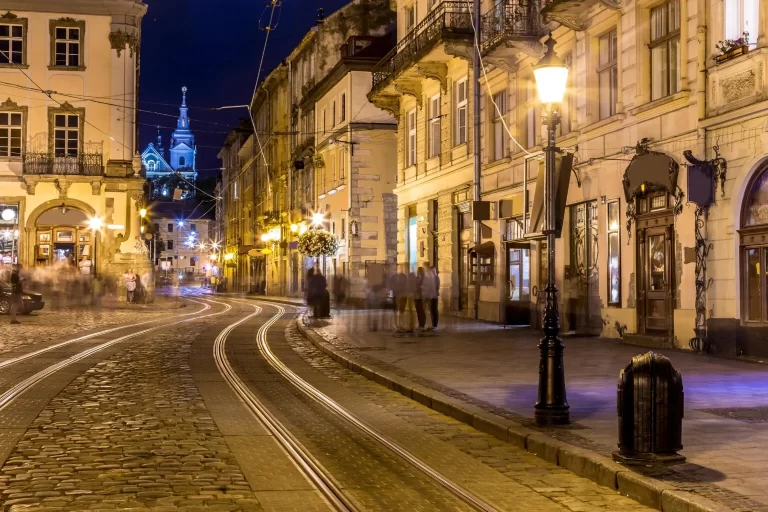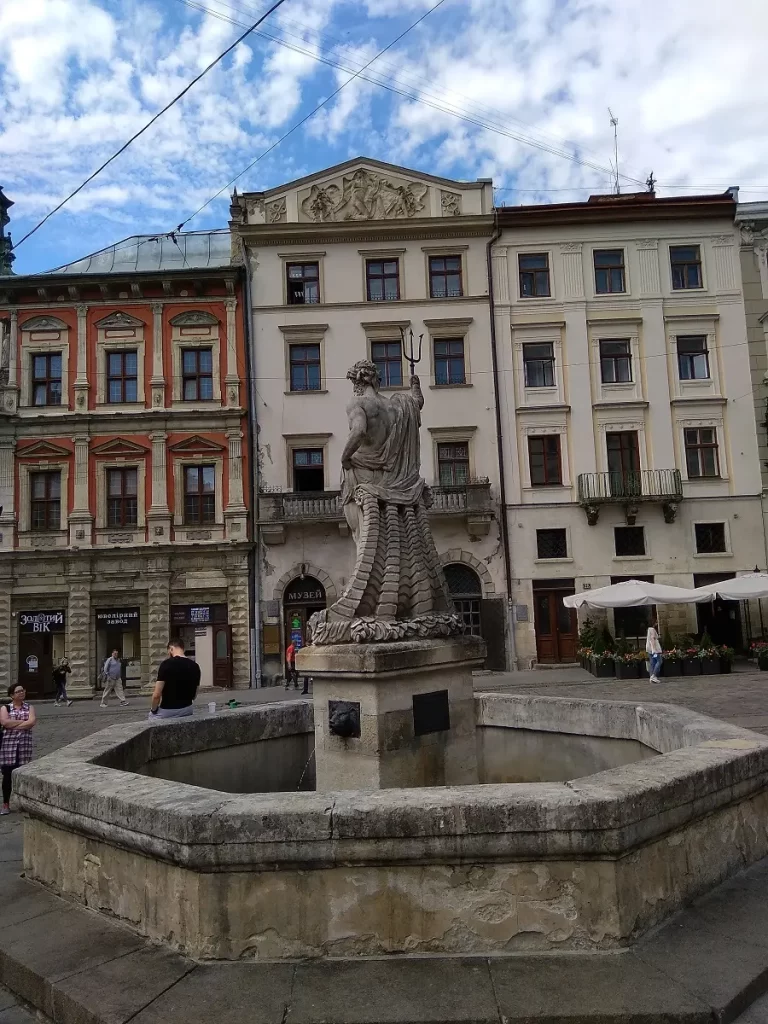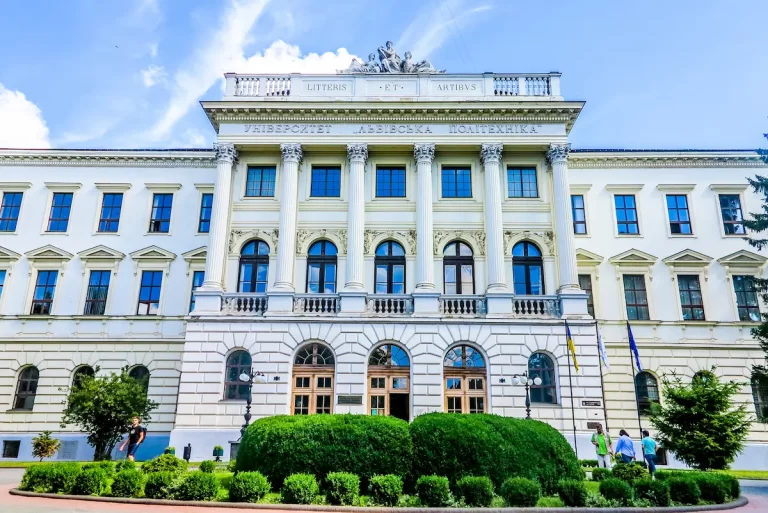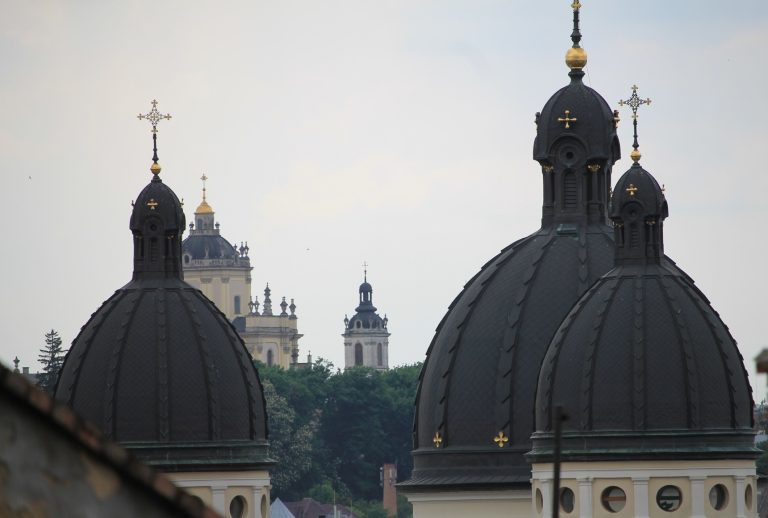Lviv in 2 hours (independent tours)
We start our two-hour tour at the corner of Rynok Square and Halytska Street. Before us we see the Latin Cathedral Church (Cathedral Square No. 1) – a majestic monument of the 14th-18th centuries, which harmoniously combines the architectural features of past eras. The Lviv Cathedral was built much longer than human life lasts, and therefore no master builder saw the fruits of his labor in its finished form.
Latin Cathedral
The Lviv Cathedral made its way from Gothic through Renaissance and Baroque, and then to elements of classicism and secession. But surprisingly, we do not feel eclecticism here: different styles of different ages do not shout, do not get excited and do not argue with each other. The passage of time has harmoniously harmonized the architectural layers of the eras and turned them into a majestic finished image.
From the Gothic style of the 14th and 15th centuries, the Lviv Cathedral inherited elongated pointed arches, vaults and windows decorated with modern stained-glass windows of the beginning of the 10th century. The Renaissance is represented here by numerous chapels, and the restoration works carried out in 1760-1778 gave the church a baroque finish.
On the same eastern wall, we can see a mounted tombstone of the family of the Lviv merchant family Sholz-Wolfovich from the 16th century. It remained from the cemetery that surrounded the Cathedral, which was liquidated at the end of the 18th century. Opposite, on the corner of Rynok Square, our attention is drawn to one of the oldest Renaissance buildings in Lviv, which has come down to us almost unchanged since 1570 – the tenement house of the Scholz-Wolfovych family.
The kernels hanging on the walls of the Cathedral on the eastern side are a reminder of the most formidable Turkish siege of Lviv in 1672. The largest core, which hangs on the side where the tram track passes, informs us of these events with the inscription: Ex obsidione turcica, that is, from the Turkish siege, the year of God 1672, the day of September 28.
The projectile, located in the wall of the church above, has the inscription “Ex obsidione ruthenorum” (from the Ukrainian siege of March 5, 1919) and reminds of the Ukrainian-Polish war of 1918-1919.
Boim Chapel
To the left of the Cathedral building, we can see the Boim Chapel – a famous landmark of the late Renaissance, which has no analogues not only in Ukraine, but also in European architecture. The monument was built in the style of the German Renaissance with features of Mannerism in 1609-1615 by the Wroclaw builder Andreas Bemer. From the side of Halytska Street, the original portraits of the early 17th century rich merchant of Hungarian origin Georg Boim and his wife Jadviga, buried here, look at us from the wall of the chapel. We pass further between the Cathedral and the chapel deep into the Cathedral Square and stop in front of the luxurious decorative decoration of the facade. In the extreme fields, in the niches, we can see the figures of the apostles Peter and Paul. When creating multi-figure compositions, according to the custom of that time, ordinary people were used as models. In this way, we have an opportunity to look into the faces of real people of an ancient era.
The bathhouse of the chapel is crowned by the figure of the Sorrowful Christ. The plot of the Savior’s prayer to His Father in the Garden of Gethsemane, widely represented in painting and plastic art, is truly unique. In the summer months, it is possible to view the interior of the chapel.
Chapel of the Campians
Next, we go around the Cathedral and stop in front of the entrance from the side of the tram track. Here, on the northern wall, we look at the Renaissance Chapel of the Campians from the beginning of the 17th century, decorated with wonderful stone carvings on evangelical subjects and a sculptural composition of the Holy Sepulcher from the 16th century.
Next, we go inside the Cathedral (admission is paid) and inspect the interior, where we pay special attention to the walls and vaults covered with frescoes by Stroinsky (18th century) and stained glass windows made at the end of the 19th century based on sketches by Megoffer and Mateik.
We leave the Cathedral and continue along Teatralna Street, where on the left we pay attention to the Church of Peter and Paul of the Jesuit Order (Teatralna Street No. 13) – a baroque shrine of 1610-1630 years, one of the largest churches in Lviv, which is now closed because there is a book depository there.
On the right at 18 Teatralna Street, immediately behind the Leopolis Hotel, is the former Didushytsky Palace, now the Natural History Museum. In 1870, Count Volodymyr Didushytskyi, a descendant of the Ukrainian noble family, a famous zoologist, ethnographer and archaeologist, opened the Natural History Museum here, which later became one of the largest and most valuable natural history museums in Europe. One of the oldest mechanical elevators in Europe is located here. In 1890, Didushytskyi donated the museum together with the building to the city. The museum has been undergoing reconstruction since the 1980s.
Armenian Cathedral
Further from Teatralna we turn right to Armenian and then left to Krakow, where we almost immediately see the entrance to the Armenian Cathedral (XIV-XV centuries) – a unique monument of Eastern culture on European territory, a perfect combination of the architecture of Armenian shrines, the Romanesque-Gothic style of the Western Europe and Old Ukrainian Galician architecture. Entering the courtyard from the Krakowska side, you will see to the right and left of the entrance to the church tombstones of the XVI-XVII centuries with well-preserved inscriptions. Entering the temple, you immediately feel the powerful authenticity of the East. The church is built of broken stone and faced with hewn slabs, the walls are up to one and a half meters thick. The design of the dome is unique – it rests on hollow ribs made of clay jugs. The interior of the church is captivating: stone-carved images of stylized Armenian sacrificial crosses of “khachkars” from the 14th-15th centuries, unique frescoes on the window slopes, fragments of the oldest monumental painting in Lviv, newer decorative mosaics and wall paintings of the 20th century in the Art Nouveau style – all this creates unique shapes and colors that cannot be found anywhere else in the world.
We leave the church, turn left and turn left again onto Virmenska Street, then we pass the church fence and enter through the archway of the belfry with the stone ornamented portal of the ancient Armenian court to the southern courtyard, which creates an incomparable impression. An arcade with a colonnade of the 15th century betrays European architectural traditions. The remains of the ancient Armenian cemetery have been preserved here – these are tombstones, the oldest of which is 600 years old and which were moved here from the cemeteries of other Armenian churches and monasteries, which have not existed in Lviv for several centuries. But this cemetery is not typical at all: the church yard is paved with slabs, or they are built into the walls.
Another highlight of the Armenian temple complex is the 18th century wooden carved chapel in the courtyard. The chapel contains an altar depicting Christ’s Passion on Calvary. A little further in the courtyard stands the column of St. Christopher, erected in 1726, and the building of the former palace of the Armenian archbishops and the Armenian bank, the oldest pawnshop in Lviv, are located here.
House “Season of the Year”
Then we go back to Virmenska street and again go left along the street. One of the oldest communities of Lviv, the Armenian community, has for centuries created a center of its national life in the city with unique architecture and the unique spirit of the most ancient Eastern Christian culture. A little further from the intersection with Drukarska Street, on the left, we can see the house “Pir roku” (Virmenska No. 23). The facade of this building has a sculptural decoration, which gave it its name from the 70s of the 19th century. This is the work of the Ukrainian sculptor Gavriyil Krasutskyi. Corinthian pilasters support the frieze, where we will find relief images of storks, masks of the winds from the four corners of the world, as well as all the zodiac signs. The reliefs allegorically depict the four seasons and the Roman god Saturn, with whom ideas about the “golden age” are associated. Allegories of spring, summer, autumn and winter reproduce the activities of farmers throughout the year. Each season is decorated with an inscription in Latin, taken from the ancient Roman poet Virgil.
Dominican Church
Then we head along Virmenska Street and after a few dozen steps we turn right to Museum Square, the former Dominican Square. Above the square rises the Dominican Cathedral, now the Greek-Catholic Church of the Holy Eucharist (Museum Square No. 1) – a magnificent architectural monument of the late Baroque with original sculptural decoration. The Dominican monastery was founded at this place in the 13th century at the request of the wife of the Ukrainian prince Lev Danylovych, the Hungarian princess Constantia, who was a Catholic and longed for her faith in a foreign land. From the 15th to the middle of the 18th century, a church built in the Gothic style stood here.
In this church and on the square in front of it, in 1559, a real war for the bride took place, using artillery and all the subtleties of military strategy. Tycoon Lukasz Gurka sought the extradition from the monastery of his legitimate wife, whom he considered to be the richest heiress of the Polish-Lithuanian Commonwealth, Halska Ostrozka, who hid behind the walls of the Dominican monastery. During the hostilities, all trade in Lviv stopped for several weeks, and the irritated king ordered an end to the war. The aqueduct leading to the monastery was cut and thus the siege ended: Halshka was handed over to Lukash.
Due to the state of emergency, the Gothic Dominican church was dismantled in 1748. The new church, which resembles the church of St. Charles in Vienna, was built in 1748-1764 according to the project of the military engineer, general of artillery Jan de Witt in the late baroque style. In those days, there was a good tradition to keep everything valuable that could be saved from the previously destroyed building. To this day, in the southern part of the church, you can see an alabaster tombstone of the 16th century – a memory of the ancient Gothic church, which disappeared 260 years ago.
During Soviet times, the Church of the Body of God was closed and a warehouse was set up here, as in many other Lviv churches, and in 1970 the Museum of Religion and Atheism was opened and a Foucault pendulum suspended under the dome was installed in the middle of the church, which confirmed the Earth’s rotation by its deviation. The museum had a film lecture hall, where lectures on atheistic topics were given and atheistic popular science films were shown.
Since the 1990s, the Dominican Cathedral has become a Greek-Catholic Church of the Holy Eucharist, especially popular among Lviv’s intelligent and nationally conscious youth. And for several years, the cathedral was illuminated and at night it has a completely different appearance.
We leave the church and head to the left through a small square to the monument to Ivan Fedorov, the first Ukrainian printer, where a bazaar of second-hand literature is located in a small square. Then we go down the stairs to the entrance to the courtyard of the Orthodox Church of the Assumption (Ruska No. 5/7) – an architectural masterpiece of the Ukrainian Renaissance, a monument of European and world importance. The Church of the Assumption of the Blessed Virgin Mary is the center of Ukrainian spiritual life throughout the entire medieval history of Lviv, a symbol of the sufferings and uplifts of Ukrainians, evidence of their indomitable spirit and desire for self-assertion.

